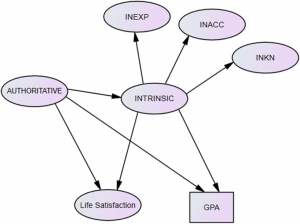Introduction
Clarifying definitions is important for communicating with audiences appropriately. The objective of the assignment 1:3 is to understand the significance of clarifying definitions in technical writing. Students are required to write a parenthetical, sentence, and expanded definition of a technical term.
Term
Authoritative parents
Scenario
In a coaching program for parenting, parents need to learn what is appropriate parenting for children. To do so, they need to understand what type of action belongs to which parenting styles. Therefore, it is necessary to understand the definition of “authoritative parents,” which is one of the parenting styles.
Definitions
Parenthetical definition:
In four different parenting styles, authoritative parents (both demanding and responsive) lead to the best outcome for children in self-resilience, GPA, and academic competence.
Sentence definition:
Authoritative parents are a parenting style that is both demanding and responsive to children. Parents with an authoritative parenting style monitor their children’s conduct, but they are assertive and supportive.
Expanded definitions:
1. History
The current division of parenting styles is based on the study by Diana Baumrind. Based on her observations, she categorized parenting styles into three; depending on the extent of demandingness and responsiveness, it was categorized into authoritarian, authoritative, and permissive. Later, other studies expanded her theory by adding uninvolved parenting (Cherry, 2021).
2. Comparison and contrast
Parenting styles differ based on the extent of support delivered from parents to children and demandingness. Authoritative parents are both demanding and responsive (Laff & Ruiz, 2019, p.73; Muraco et al., 2020). Authoritarian parents are demanding but low in responsiveness (Laff & Ruiz, 2019, p.73; Muraco et al., 2020). Permissive parents are low in demandingness but responsive (Laff & Ruiz, 2019, p.73; Muraco et al., 2020). Uninvolved parents are both low in demandingness and responsiveness (Laff & Ruiz, 2019, p.73; Muraco et al., 2020).
3. Visuals
This figure explains how authoritative parenting styles bring the best academic outcome (Stavrulaki et al., 2020).
4. Examples
Authoritative parents give children a high level of demand and responsiveness (Laff & Ruiz, 2019, p.73). Even though they are strict in certain things, they have a clear standard and their response to children’s actions is warm. Since they communicate well with their children, parents’ reactions are reasonable for children. For example, they allow their children to play or study for a certain time, and they carefully teach based on how children follow the rules.
References
Cherry, K. (2021, September 2). Diana Baumrind biography. Explore Psychology. https://www.explorepsychology.com/diana-baumrind/
Laff, R., & Ruiz, W. (2019). Child, Family, and Community. College of Canyons. https://drive.google.com/file/d/1B4Y2EEp7HoECRBh_vXP3BCrg84QYOnjD/view
Muraco, J. A., Ruiz, W., Laff, R., Thompson, R., & Lang, D. (2020, May 18). Baumrind’s parenting styles – Parenting and family diversity issues. Iowa State University Digital Press – Open Access Books and Educational Resources Publishing. https://iastate.pressbooks.pub/parentingfamilydiversity/chapter/chapter-1-2/
Stavrulaki, E., Li, M., & Gupta, J. (2020). Perceived parenting styles, academic achievement, and life satisfaction of college students: The mediating role of motivation orientation. European Journal of Psychology of Education, 36(3), 693-717. https://doi.org/10.1007/s10212-020-00493-2

Hi Nina,
You have done a proficient job in Laying out the various kinds of definitions for your term, “authoritative parents.” Your Expanded Definition is well-supported by the additional evidence you cite from manuscripts that examine Diana Baumrind. Additionally, you have laid out the situation or scenario for your term using concise and confident writing. There is no ambiguity for the reader. In terms of any constructive feedback, I think your sentence definition might be better shortened into a single sentence with a comma, rather than broken into two sentences.
All in all, this was a tremendous job on Assignment 1:3. Great work!
Kind regards from your team member,
Liam